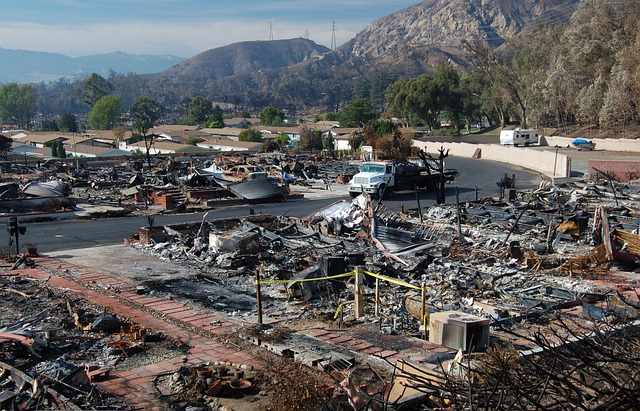Selling homes with fire damage in California has gained popularity due to economic pressures and distressed property owners seeking foreclosure relief. This process demands knowledge of real estate and legal procedures, often leading to below-market prices for buyers interested in rehabbing or flipping. California's strong legal framework ensures transparency, protecting both homeowners and investors while streamlining sales. Key steps include assessing repair needs, engaging professional remediation services, and openly communicating fire history to prospective buyers in a competitive market.
Distressed property sales, particularly those involving fire-damaged homes in California, present unique challenges for sellers and buyers alike. This article explores the intricacies of navigating fire damage when selling a home in the Golden State. We delve into legal considerations, insurance implications, and practical steps to prepare and market your property effectively. Understanding these processes is crucial for successful distressed sales, ensuring both fairness and transparency throughout the transaction.
- Understanding Distressed Property Sales in California
- Navigating Fire Damage: Selling a Home with Challenges
Understanding Distressed Property Sales in California

In California, distressed property sales have become increasingly prevalent due to various economic and personal factors. These sales involve properties that are in foreclosure or owned by individuals who can no longer afford their mortgage payments. One specific scenario that falls under this category is selling a home with fire damage California. Many homeowners face unexpected financial burdens after a fire, making it difficult to cover the cost of repairs and mortgage payments simultaneously. As a result, they may opt for a distressed sale to avoid foreclosure and minimize losses.
Selling a home with fire damage California requires a nuanced understanding of both real estate markets and legal processes. In such cases, properties are often sold at below-market prices to attract buyers who can either rehabilitate the home or sell it as-is for a quick profit. This process benefits both the homeowner in distress and potential investors looking for opportunities in the secondary market. California’s robust legal framework ensures that all parties involved understand their rights and obligations, fostering transparency and facilitating efficient distressed property sales.
Navigating Fire Damage: Selling a Home with Challenges

Navigating Fire Damage: Selling a Home with Challenges in California
Selling a home with fire damage in California presents unique challenges, but it’s not insurmountable. The first step is assessing the extent of the damage. Working with a qualified inspector who understands the intricacies of California’s building codes and reconstruction standards is crucial. This evaluation determines what repairs are needed and how much they cost, factors that significantly influence the property’s resale value.
In addition to structural repairs, aesthetic considerations come into play. Smoke and water damage can leave behind visible marks that may deter potential buyers. Professional remediation services can mitigate these effects, but it’s important to be transparent about the history of the home. Open communication with prospective buyers regarding the fire damage and subsequent restoration efforts builds trust and can speed up the selling process in the competitive California real estate market.
Selling a home with fire damage in California can be a complex process, but understanding distressed property sales is key. By navigating the challenges of fire-damaged homes, potential sellers can unlock opportunities and find solutions tailored to their unique situations. Whether it’s repairing and rehabilitating the property or employing strategic marketing techniques, these steps are essential to successfully selling a home with fire damage in California’s competitive market.






